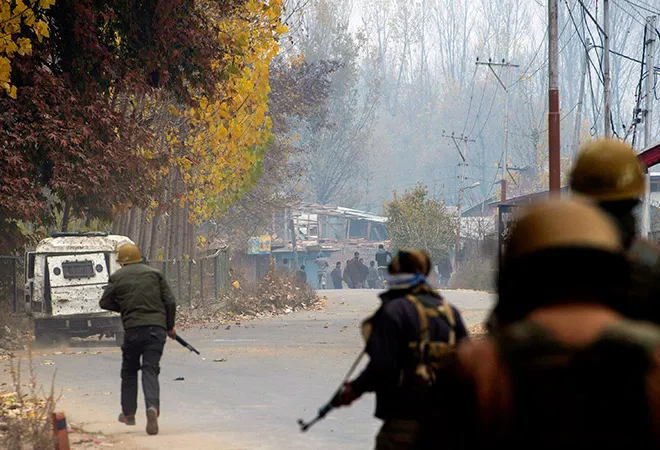On 17 November, Islamic State’s officially aligned mouthpiece Amaq released a statement claiming responsibility for the killing of a police officer, later identified as one Imran Tak, in a shootout in the Zakura region of the Indian state of Jammu and Kashmir. One of the assailants, Mugees Ahmad Mir, was killed, while another was injured and arrested.
The fact that Amaq claimed ISIS responsibility for the attack in Zakura technically puts a lot of weight behind its legitimacy.
Historically, most attacks conducted or orchestrated by ISIS, whether by individuals or groups in the Middle East, Europe and beyond, are claimed by Amaq, giving the event “official” legitimacy. Amaq regularly releases such statements, including infographics detailing ISIS operations over the period of a month, while also operating channels on the instant-messaging service Telegram marketing the outcomes of ISIS operations to ever-receptive international media and an expansive online recruitment drive orchestrated with immense precision by the proto-state.
Al-Naba, considered ISIS’ official newsletter, released an info-graph detailing this year’s attacks on foreign lands a few days after Amaq’s Kashmir claims; however, the Kashmir attack did not figure in these data.
Kashmir is not new to ISIS flags being waved in the valley; however, the number of instances of this is negligible. Police forces in the region continue to maintain that ISIS has no “imprints” in the Kashmir Valley, which remains largely true.
Over the past three years, there have been sporadic instances of ISIS imagery, mostly the flag, being waved during unrest in Kashmir (many times the flags waved were incorrect in their use of Islamic imagery, showcasing the novelty factor of ISIS more than an ideological connection).
However, in an unplanned oddity, the already existing political complexities in the Kashmir Valley, if ISIS makes any official attempt to set up a wilayat (quasi-state) in J&K, it should expect great pushback from the prevailing situation in the region, both from state security and jihadists alike.
The combination of Pakistan’s state-sponsored terrorism, the Indian Army’s overwhelming presence to lay a security blanket throughout the valley to fight Islamabad’s overtures, and local Kashmiri factions fighting for their own causes creates a challenging environment for any outside intervention.
This is highlighted by Al-Qaeda in the Indian Subcontinent (AQIS) “hiring” former Hizbul Mujahideen terrorist Zakir Musa, and the organisation’s umpteenth attempt to make inroads into the Indian terror discourse without too much success despite taking a leaf from ISIS’ propaganda manual and releasing material online in regional languages.
However, ISIS is losing territory both in Iraq and Syria, and it could look to cause disruptions using its online mechanism to instill fear and chaos in precarious regions such as Kashmir. Previously ISIS, via Amaq, has claimed responsibility for acts of terror that it originally had nothing to do with, in an opportunistic strategy. Overall, even ISIS’ famed media propaganda machinery is reportedly falling silent as it faces a complete loss of its proto-state, and is forced to go back to its original roots, that of an insurgency movement.
According to some testimonies regarding alleged Indian pro-ISIS activities gathered by intelligence agencies, the issue of Kashmir has only come up a few times. According to one charge sheet, the accused said Kashmir was already held captive by the kuffar (unbeliever) Indian Army and nationalist Pakistani jihadi groups who are only fighting for land, and would never accept fighting under Islamic State.
However, it is imperative to remember that the narrative of the “death of ISIS” we hear today is oversold. While ISIS may have lost territory, it still very much exists on the ground.
This commentary originally appeared in Asia Times.
The views expressed above belong to the author(s). ORF research and analyses now available on Telegram! Click here to access our curated content — blogs, longforms and interviews.




 PREV
PREV



